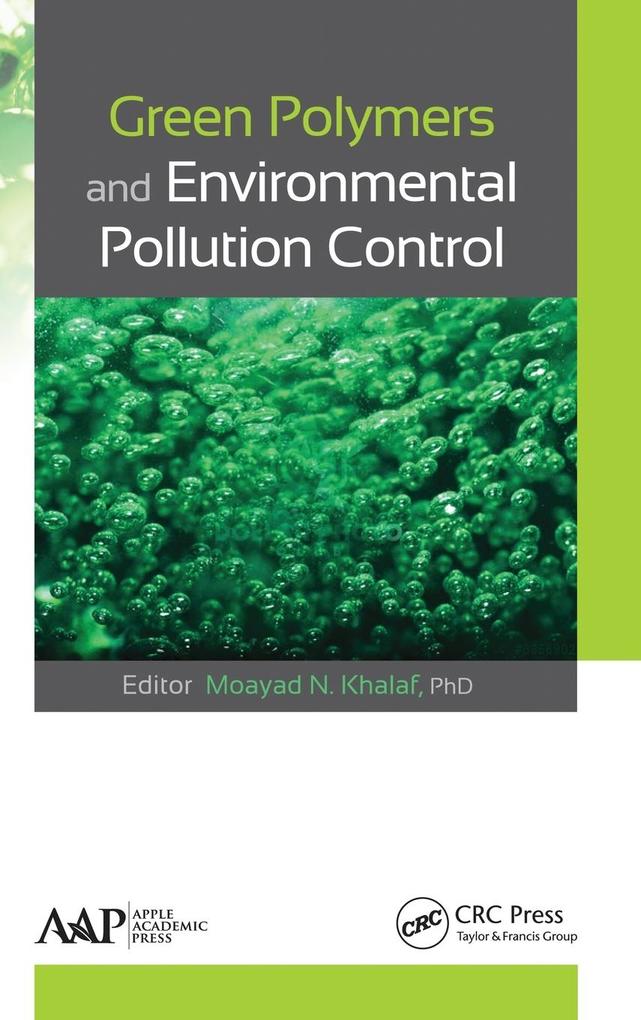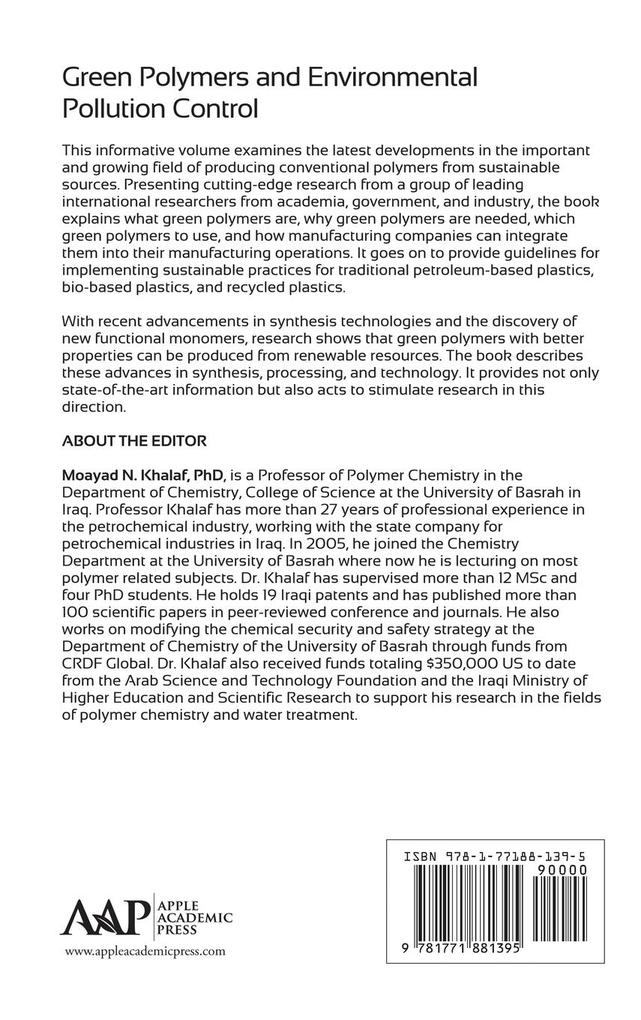
Zustellung: Fr, 06.06. - Do, 12.06.
Versand in 2 Wochen
VersandkostenfreiBestellen & in Filiale abholen:
Green Polymers and Environment Pollution Control examines the latest developments in the important and growing field of producing conventional polymers from sustainable sources. Presenting cutting-edge research from a group of leading international researchers from academia, government, and industrial institutions, the book explains what green polymers are, why green polymers are needed, which green polymers to use, and how manufacturing companies can integrate them into their manufacturing operations. It goes on to provide guidelines for implementing sustainable practices for traditional petroleum-based plastics, biobased plastics, and recycled plastics.
Inhaltsverzeichnis
Preface. Preparation and Characterization of Novel Conductive Porous Chitosan-Based Nanocomposite Scaffolds for Tissue Engineering Applications. Morphological, Thermal and Mechanical Properties of Green Composite Based on Recycled Polyethylene/ Polyamide-6/Kenafcomposites. Effect of Compatibilizer: Filler Ratio on the Tensile, Barrier and Thermal Properties of Polyethylene Composite Films Manufactured from Natural Fiber and Nanoclay. A Detailed Review on Modeling of CNT/ Green Polymer Composites. Moving Towards Greener Cationic Polymerizations. Layer by Layer Assembly of Biopolymers onto Soft and Porous Gels. Use of Recycled Polymer in the Construction Industry. Polyuronates and Their Application in Drug Delivery and Cosmetics. Biological Delignification of Biomass. Recent Research in the Applications of Chitin, Chitosan and Oligosaccharides. Natural Fiber Composites and Applications. Removal and Recovery of Heavy Metals Using Natural Polymeric Materials. Index.
Produktdetails
Erscheinungsdatum
11. November 2015
Sprache
englisch
Seitenanzahl
436
Autor/Autorin
Moayad N Khalaf
Verlag/Hersteller
Produktart
gebunden
Gewicht
726 g
Größe (L/B/H)
231/155/28 mm
ISBN
9781771881395
Entdecken Sie mehr
Bewertungen
0 Bewertungen
Es wurden noch keine Bewertungen abgegeben. Schreiben Sie die erste Bewertung zu "Green Polymers and Environmental Pollution Control" und helfen Sie damit anderen bei der Kaufentscheidung.











